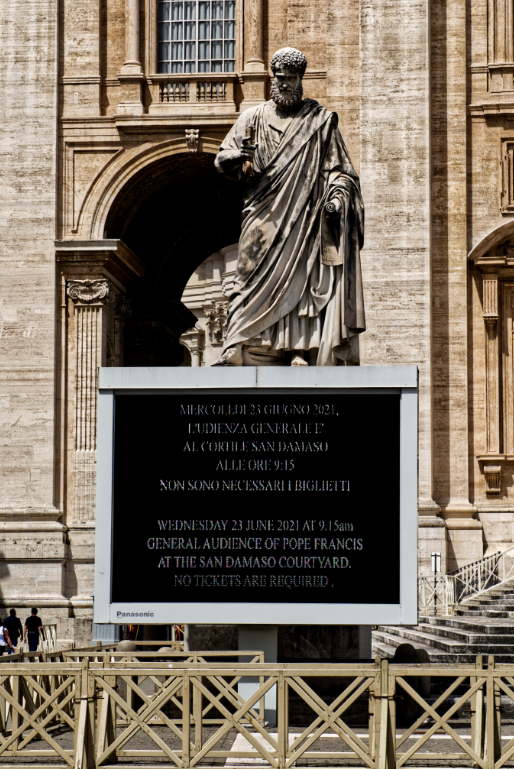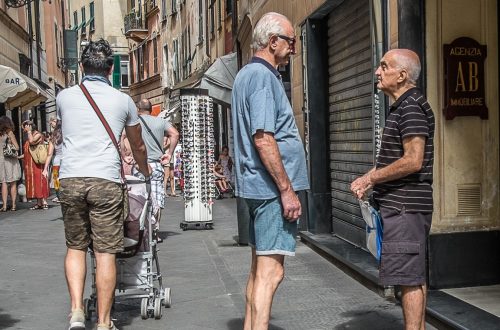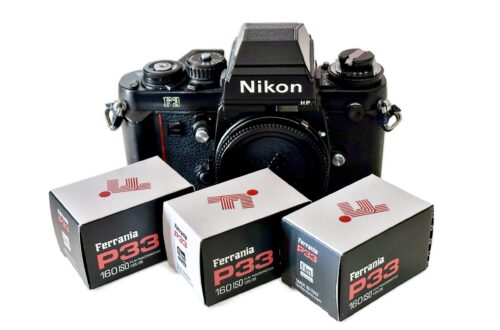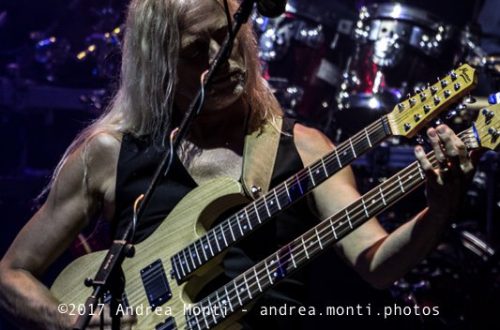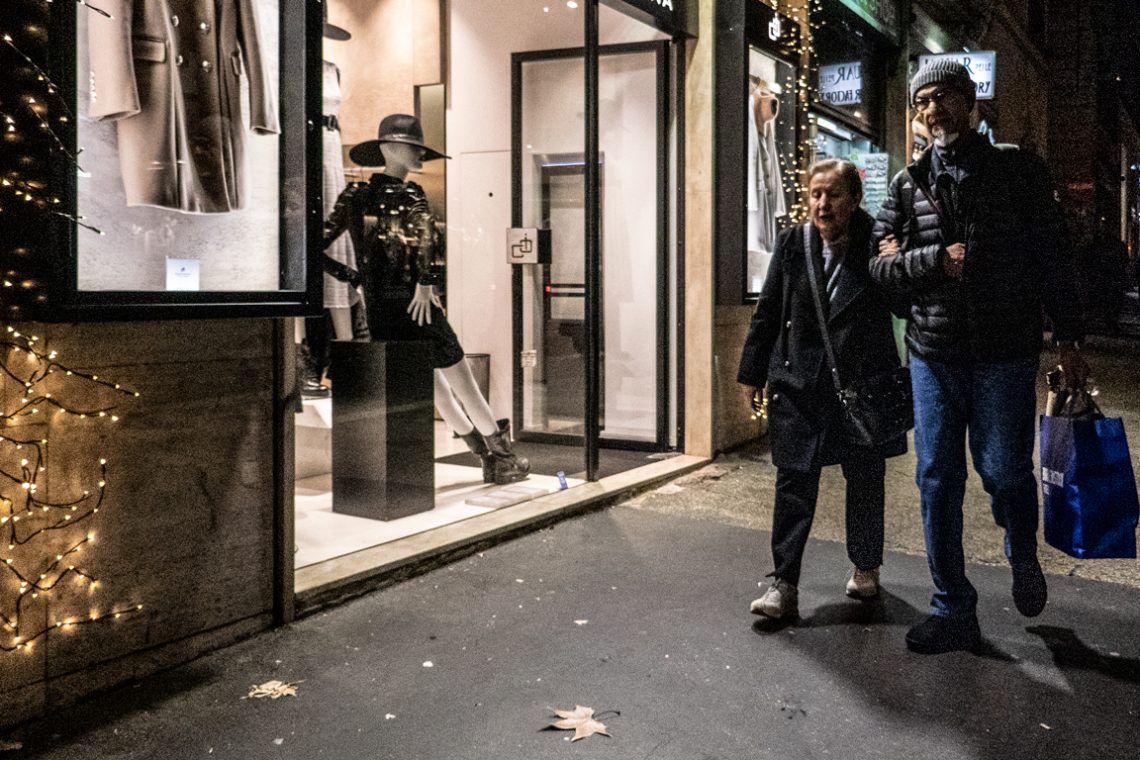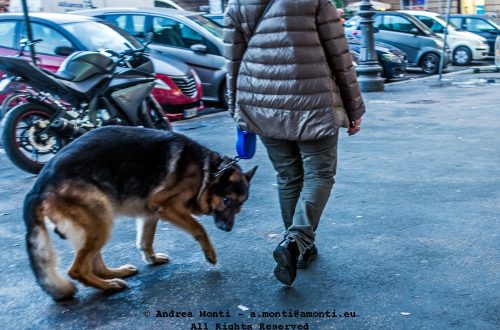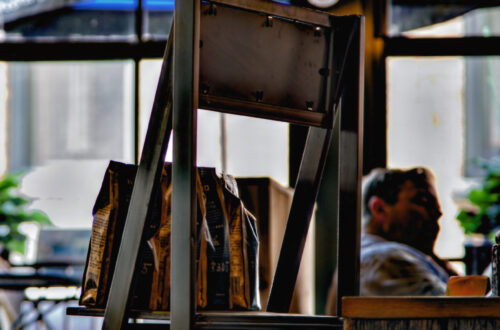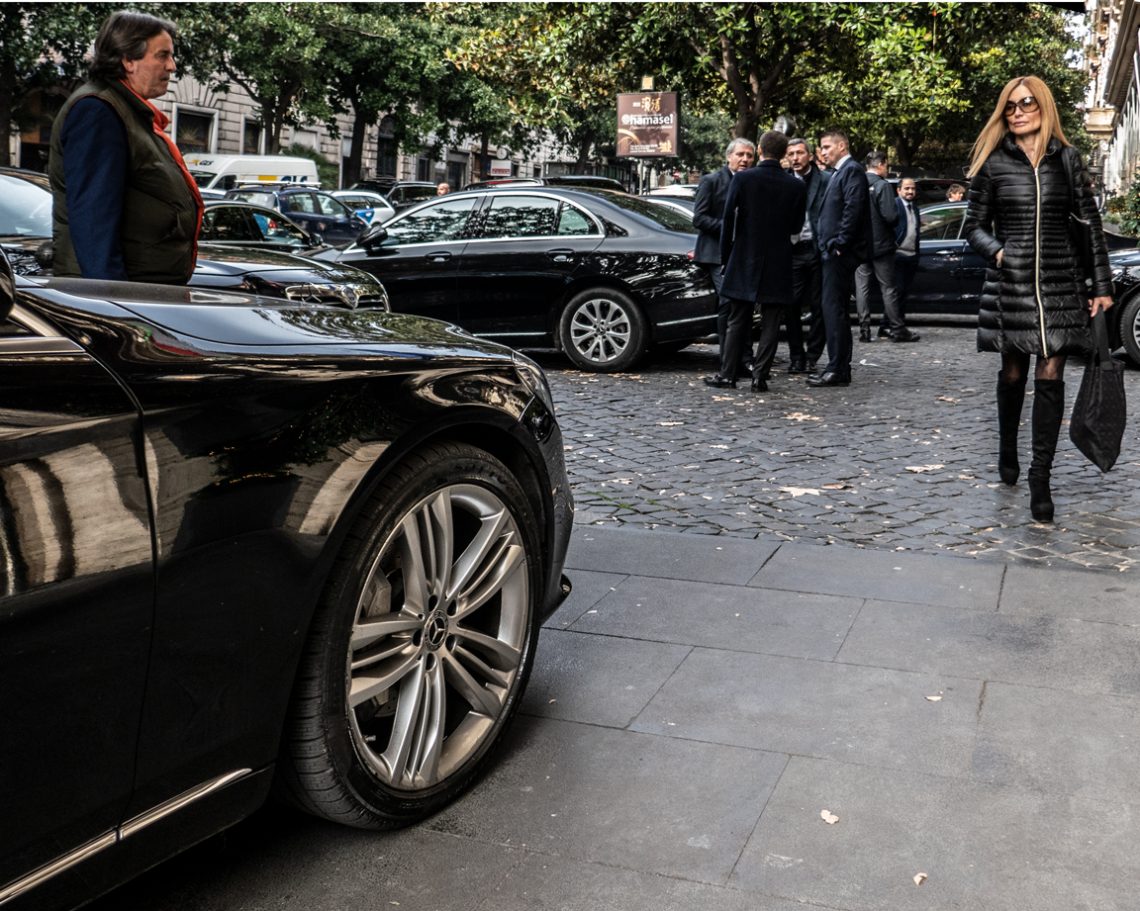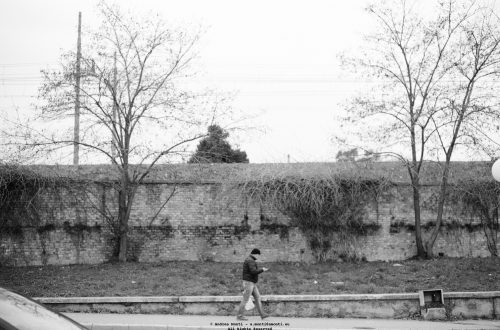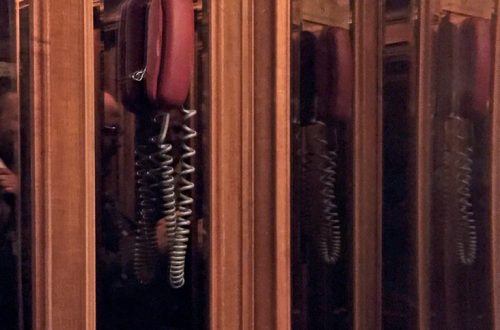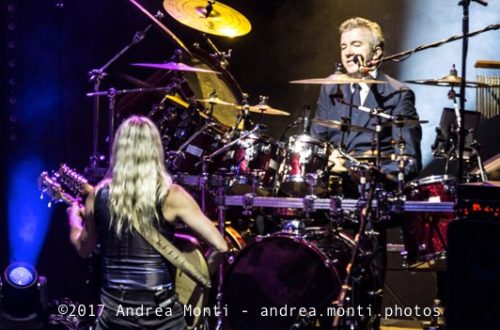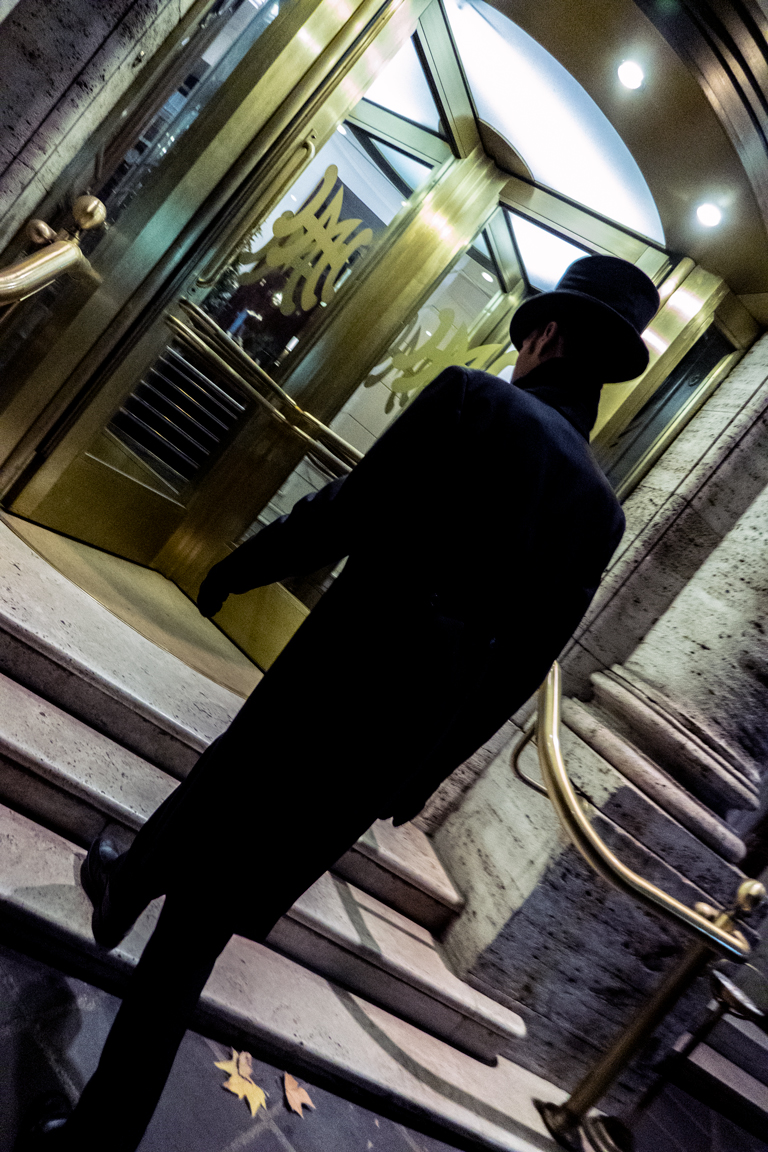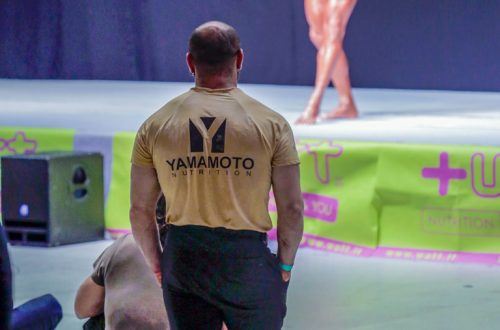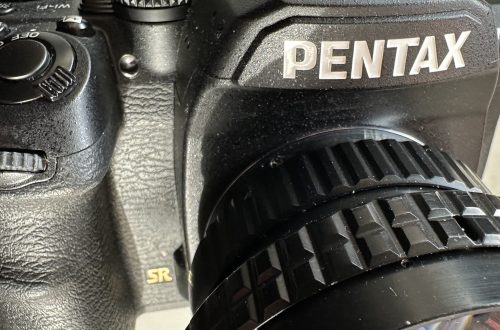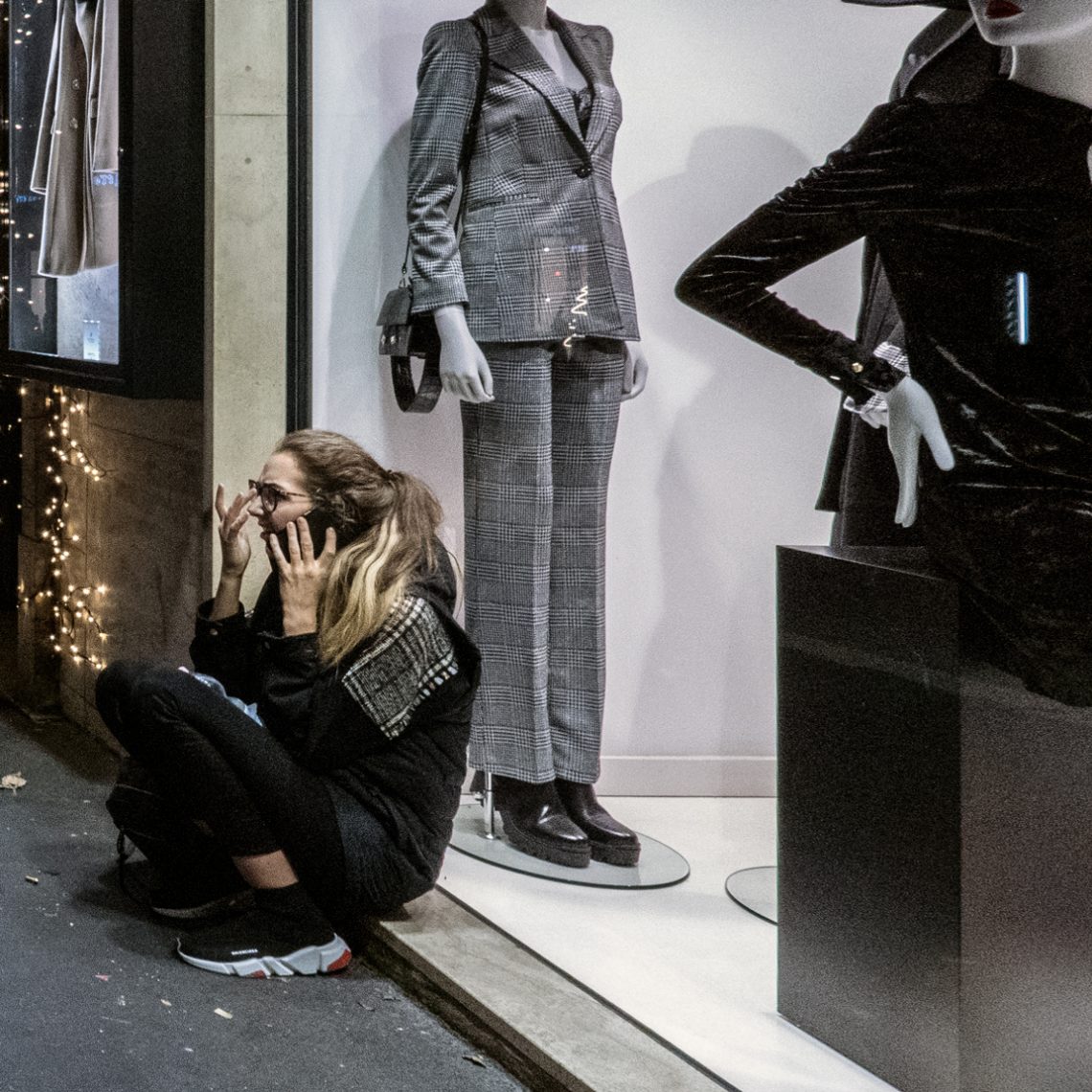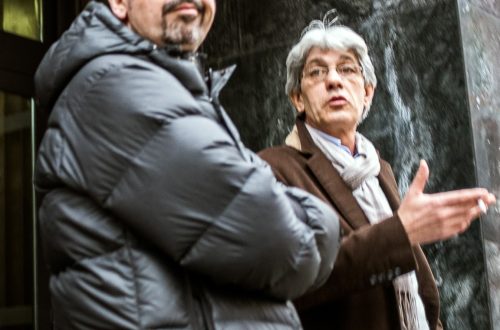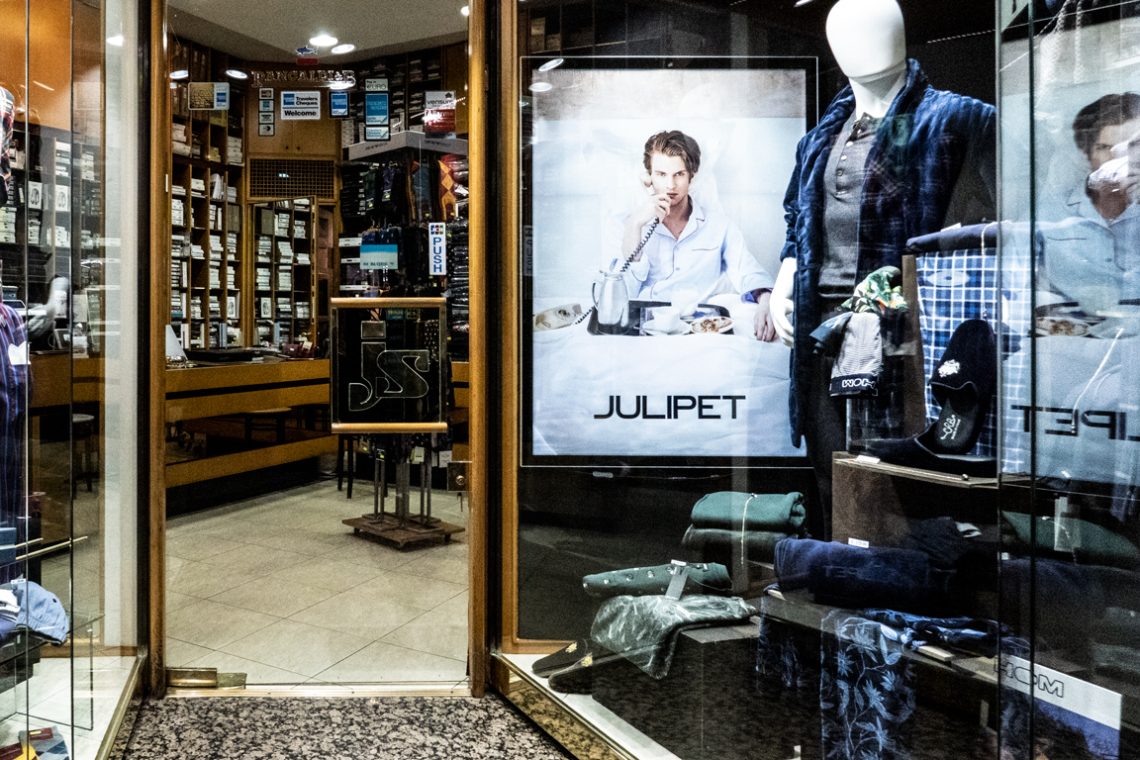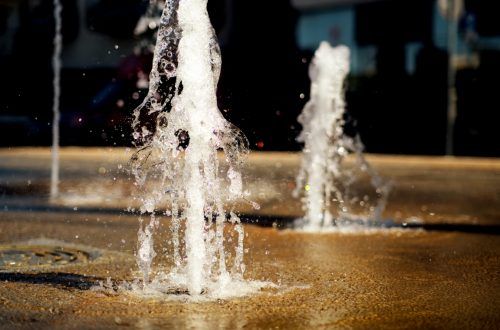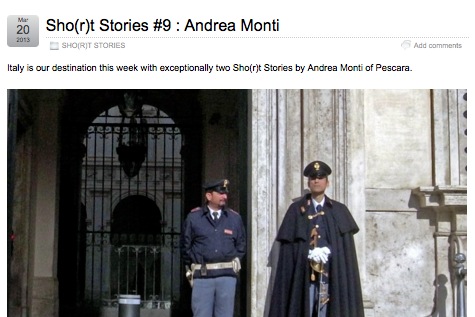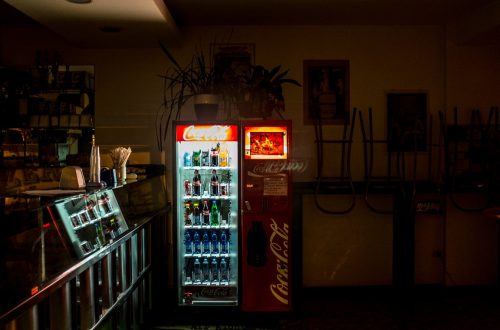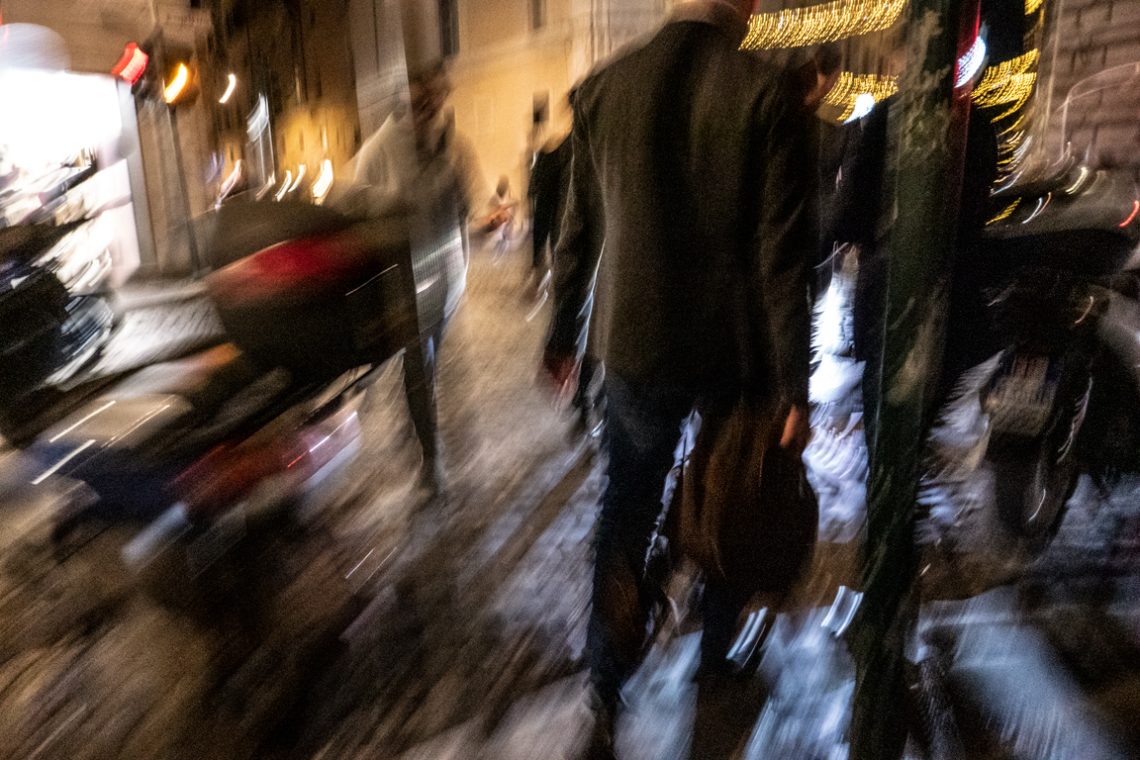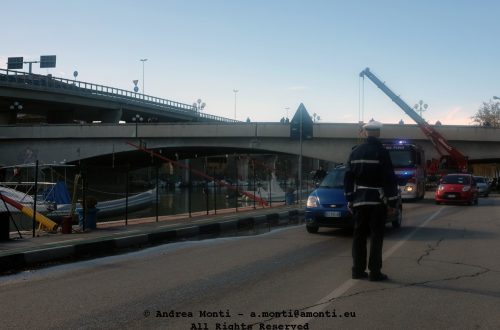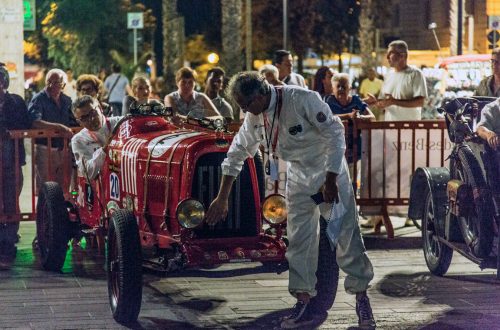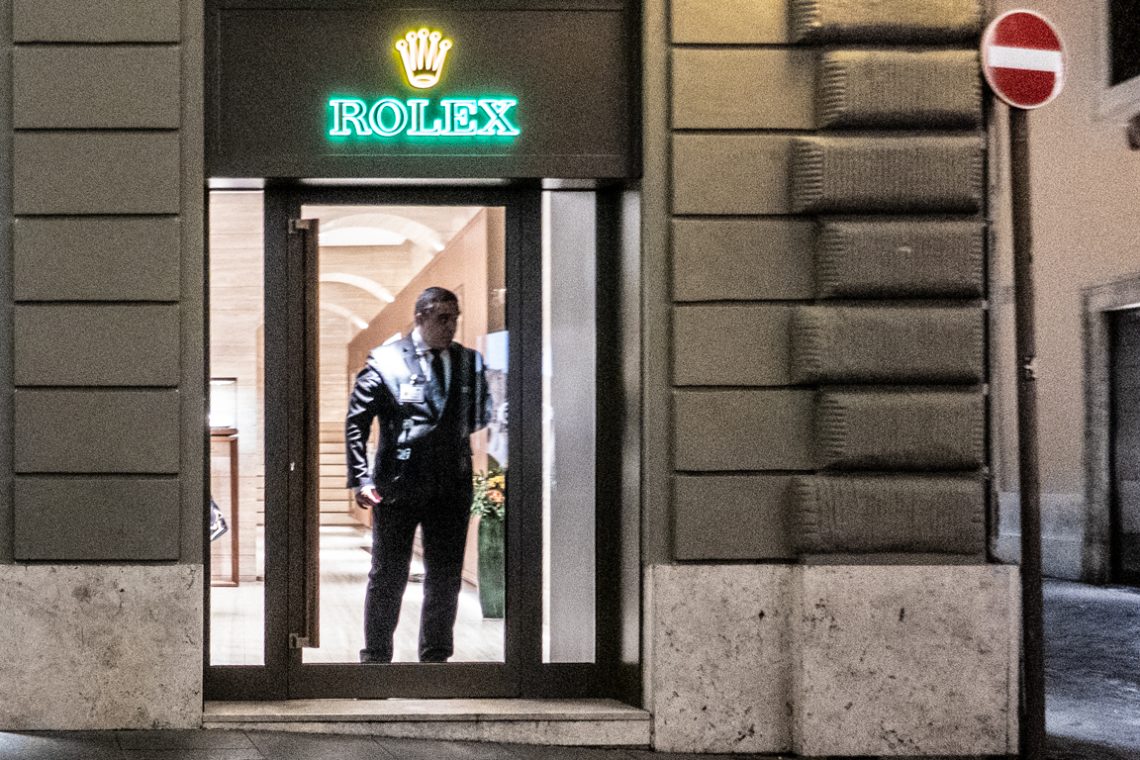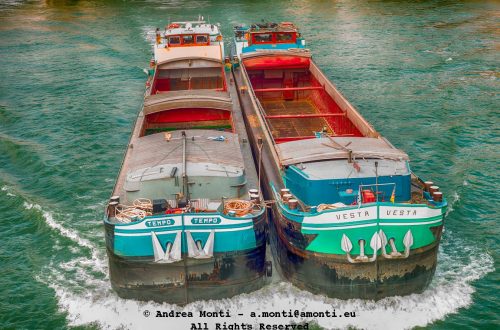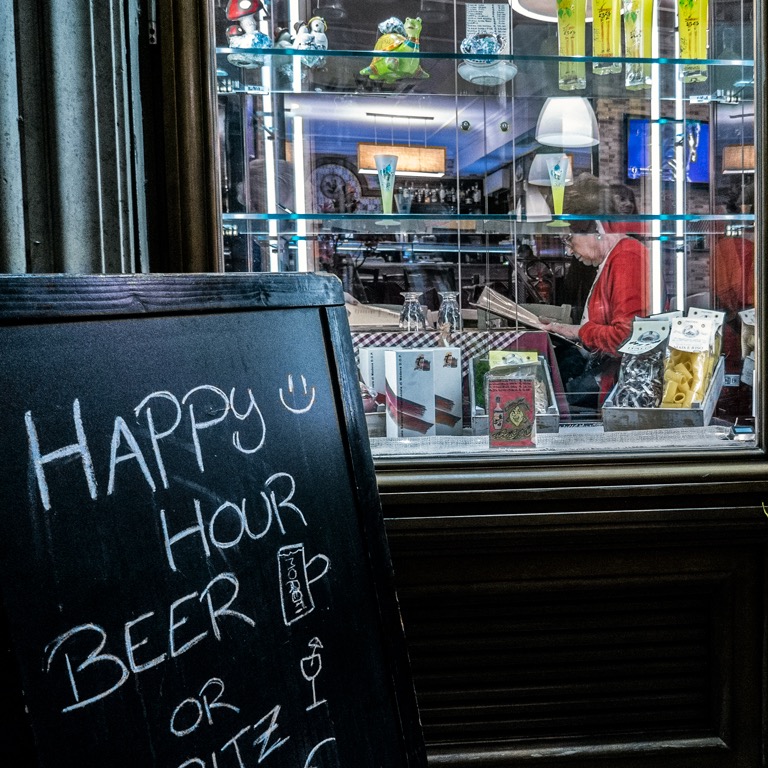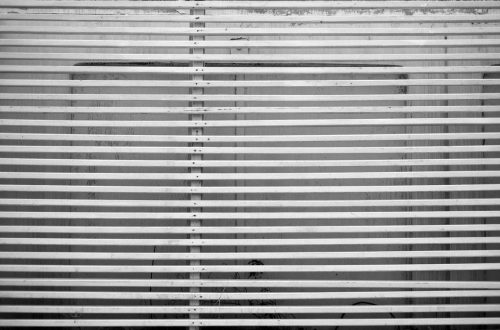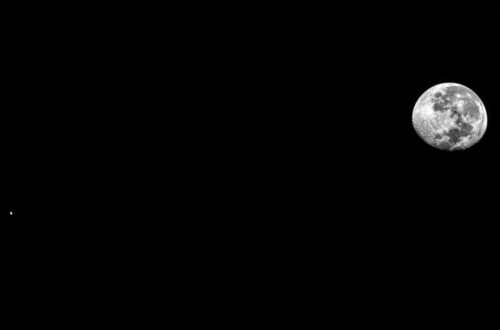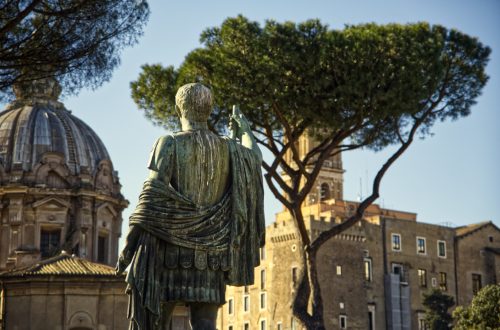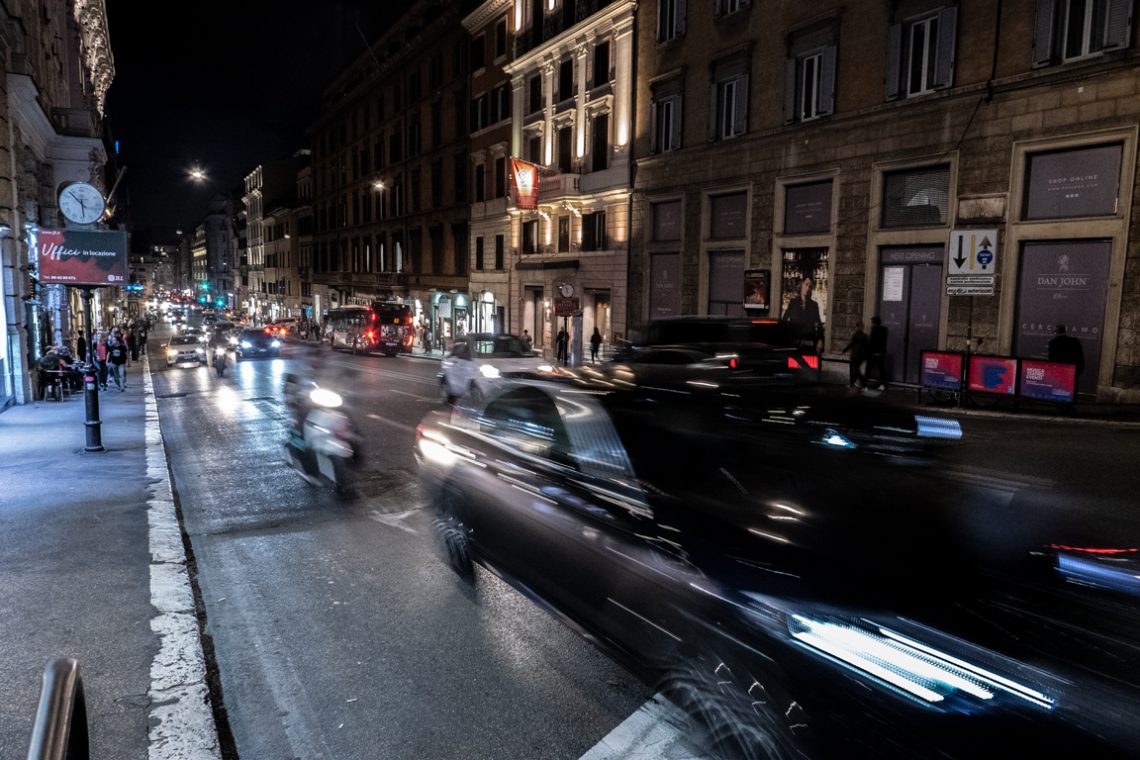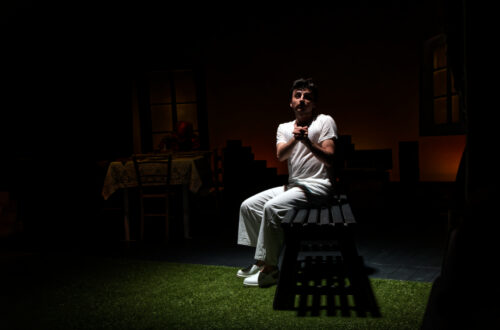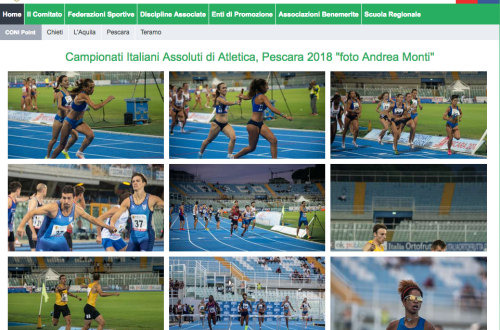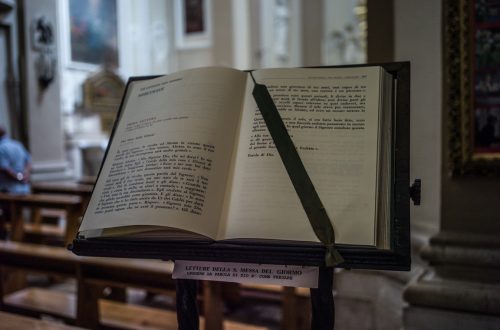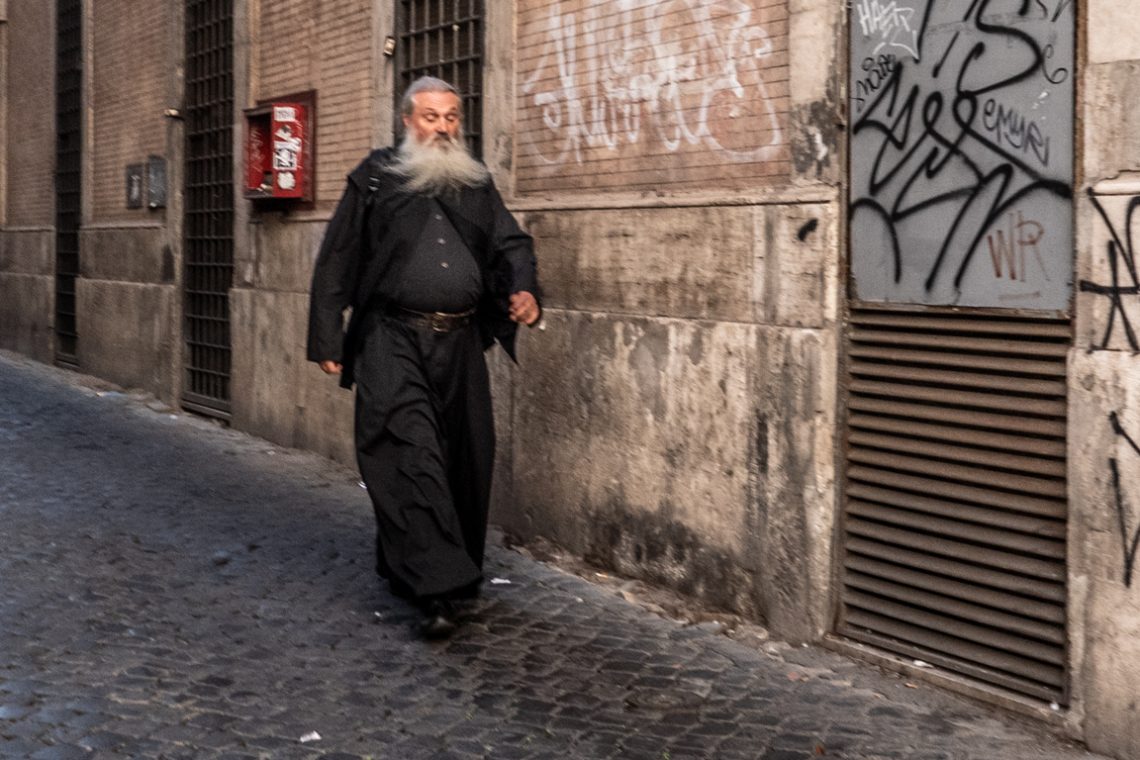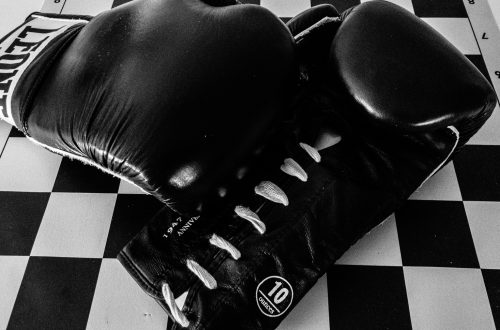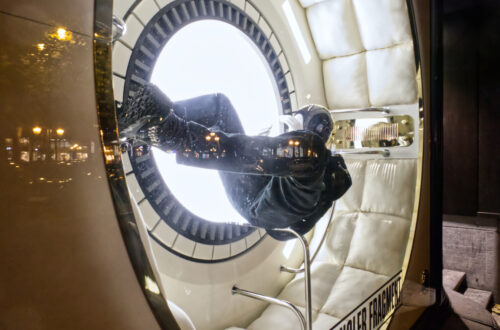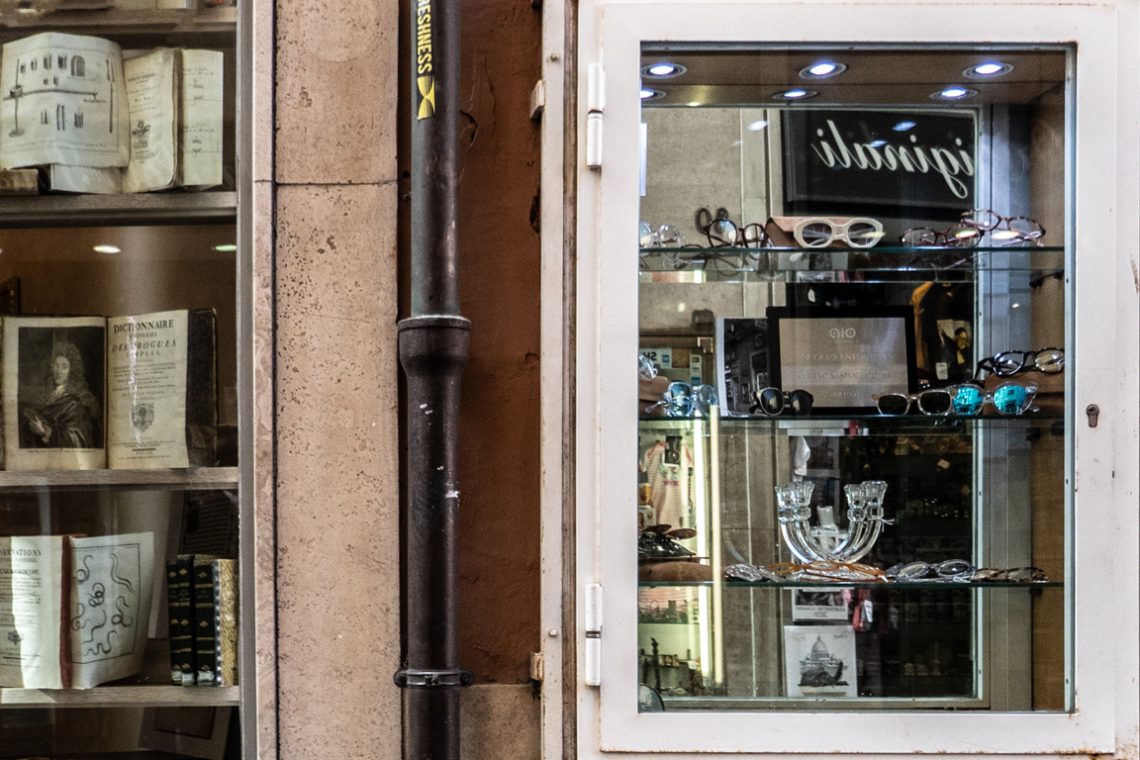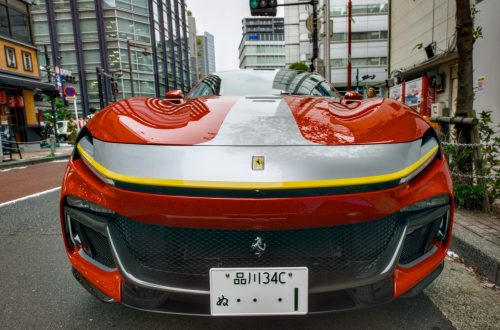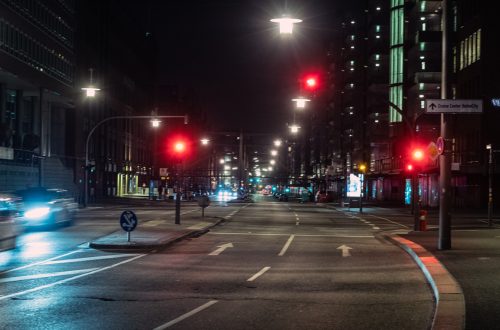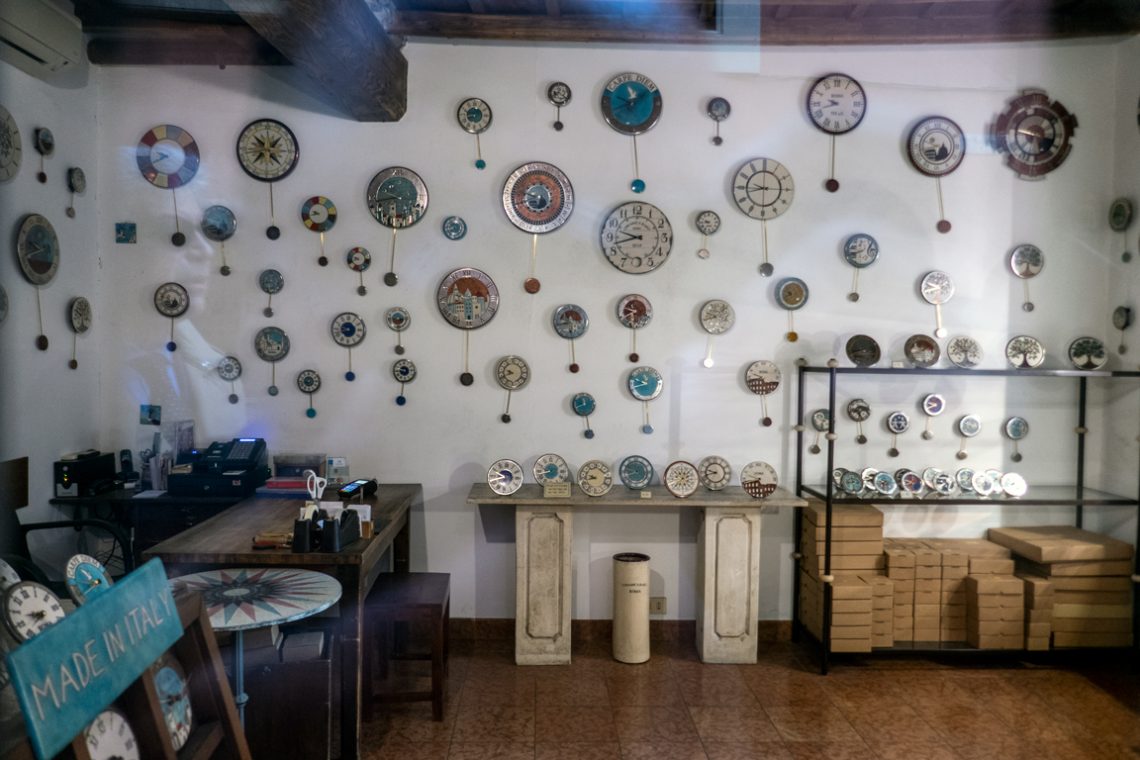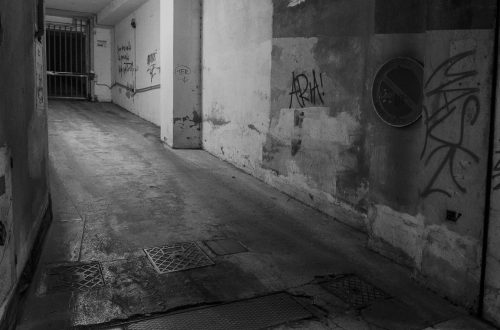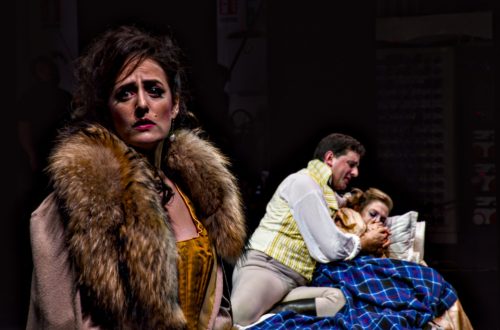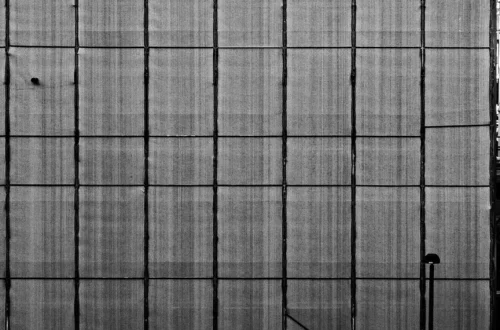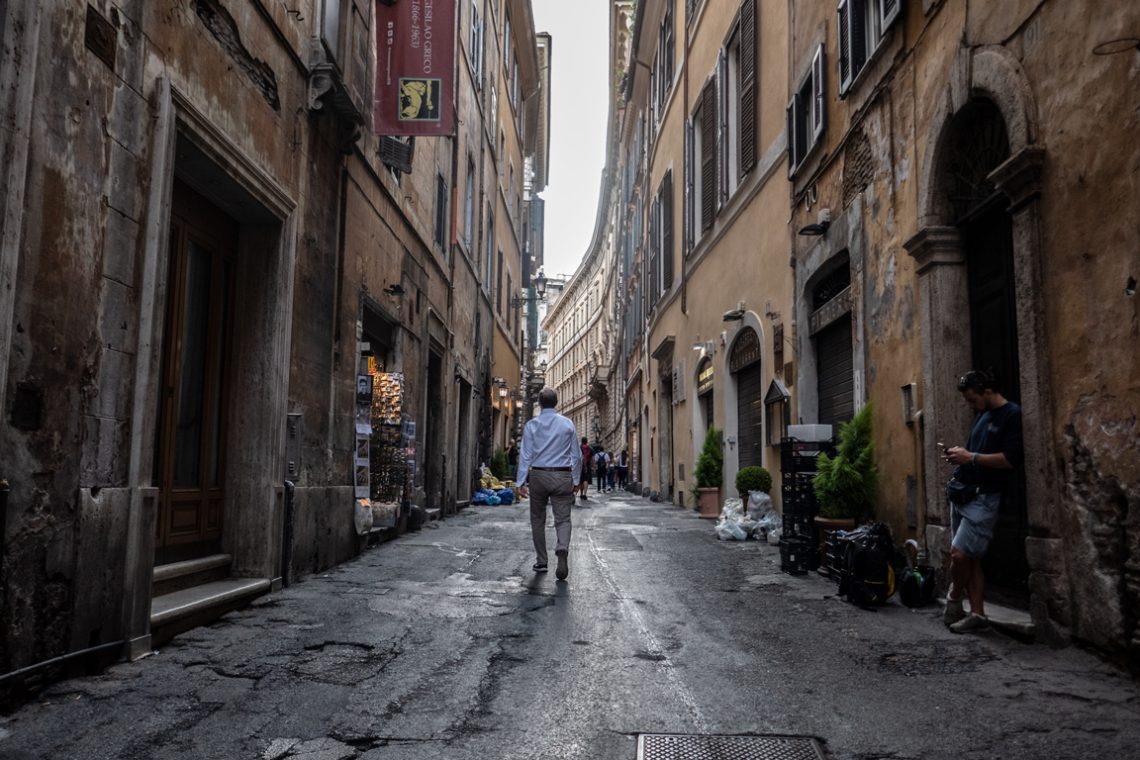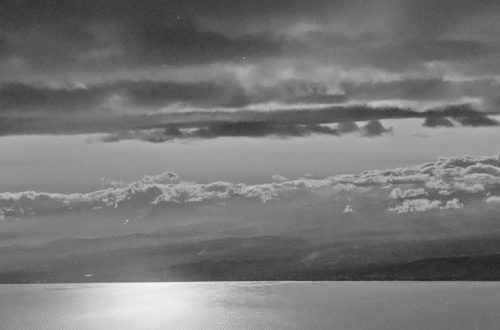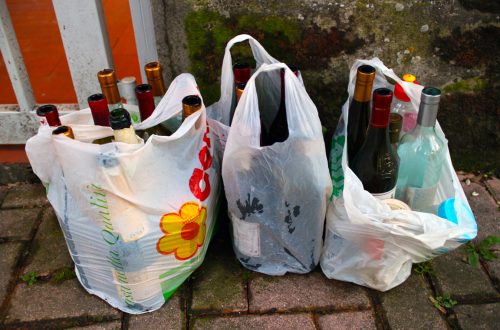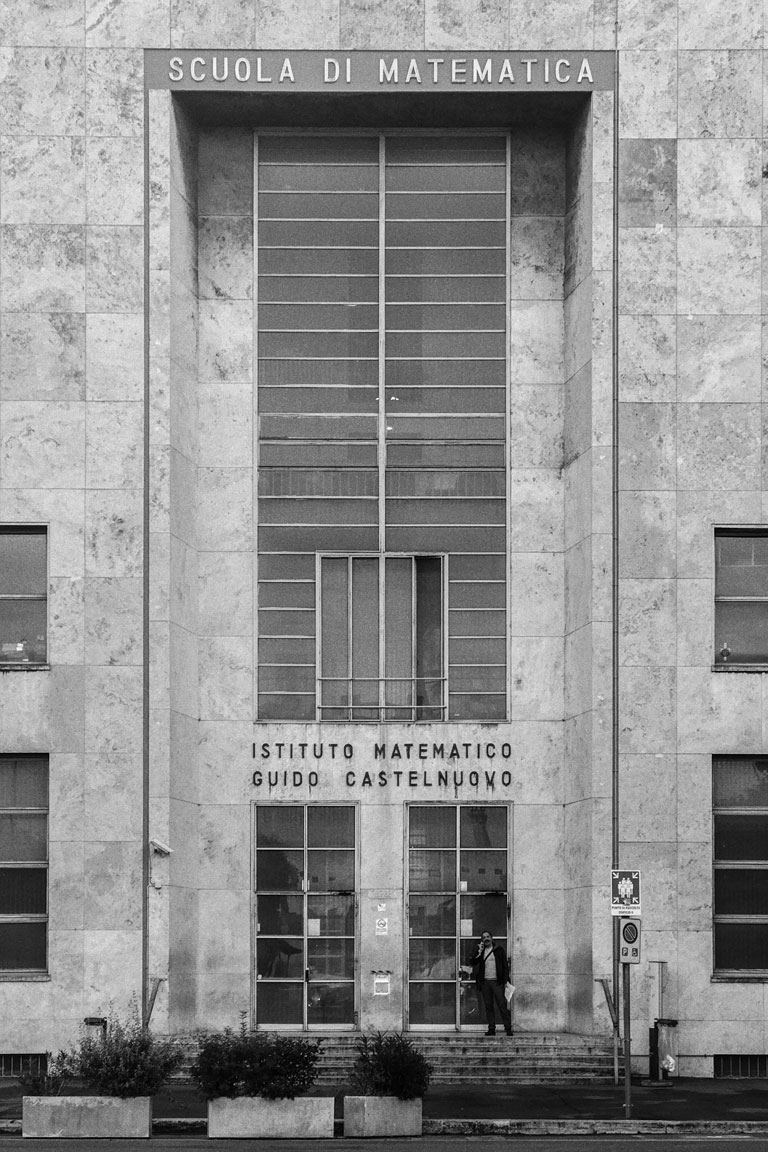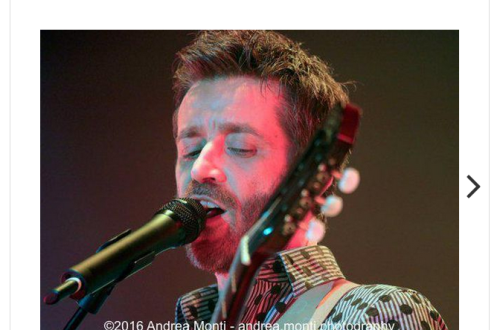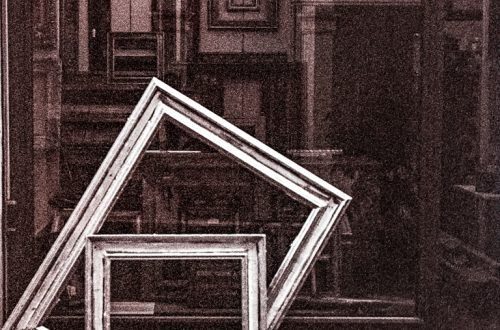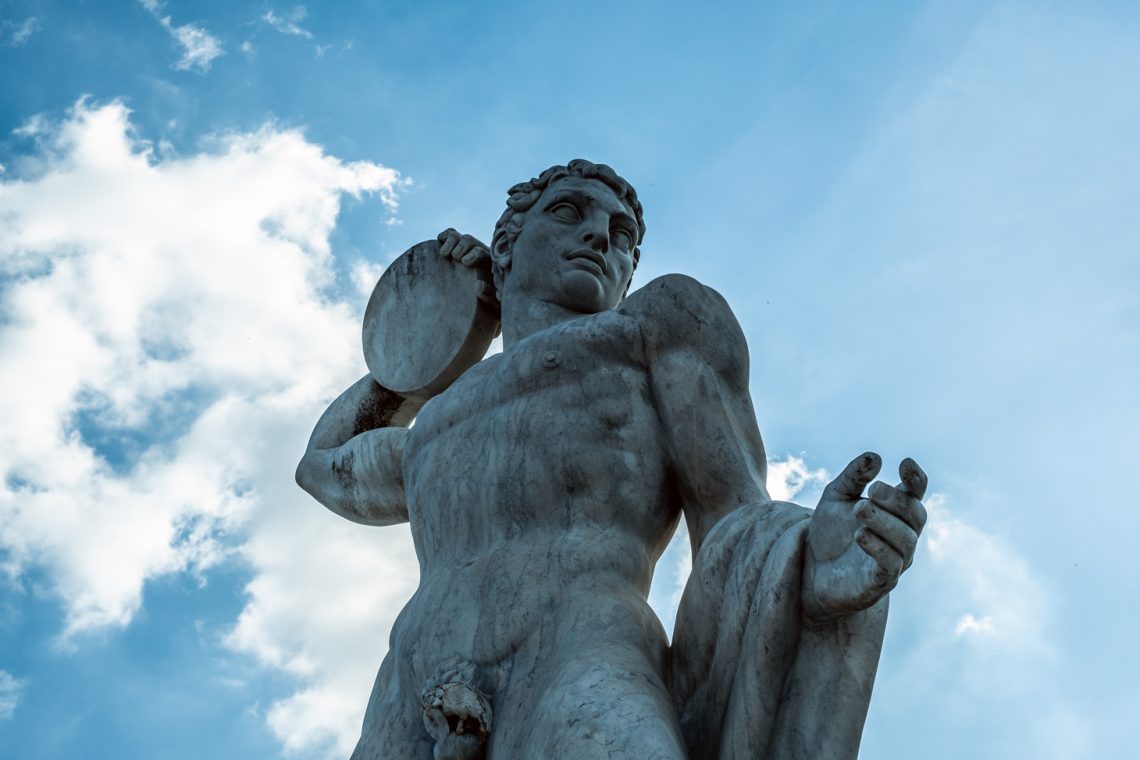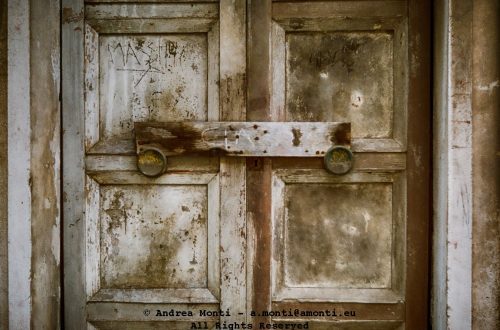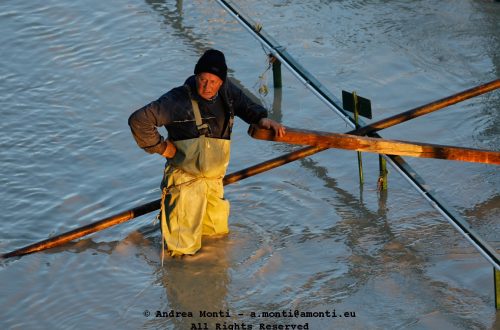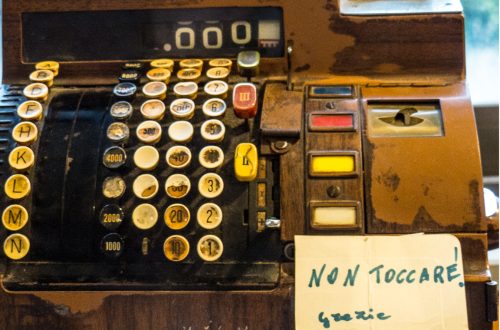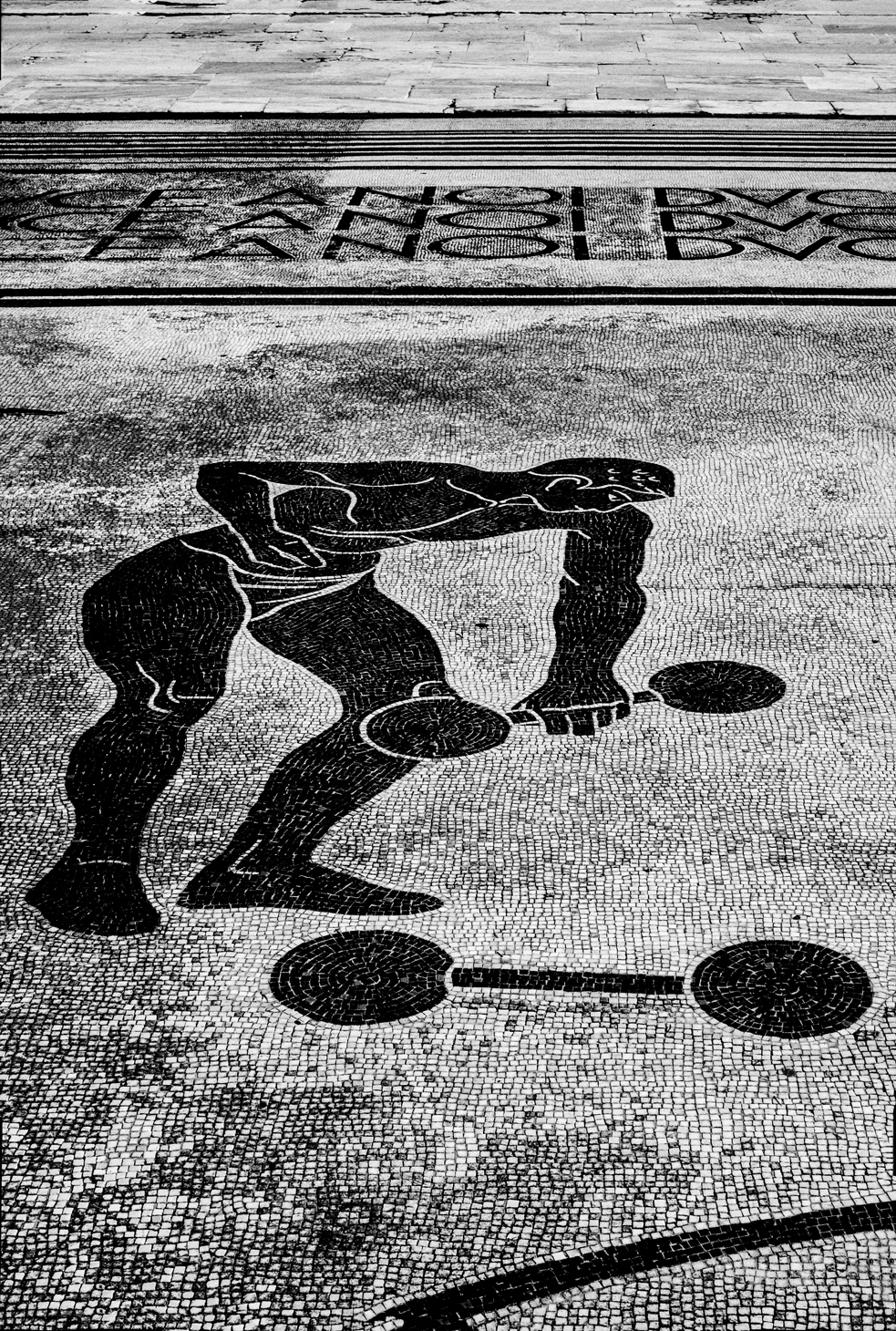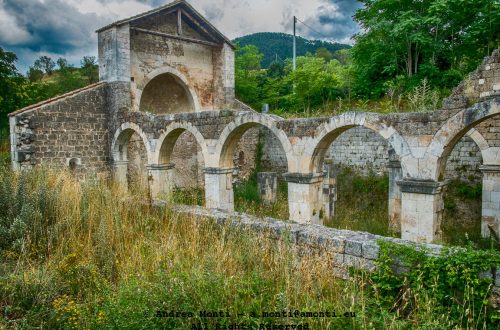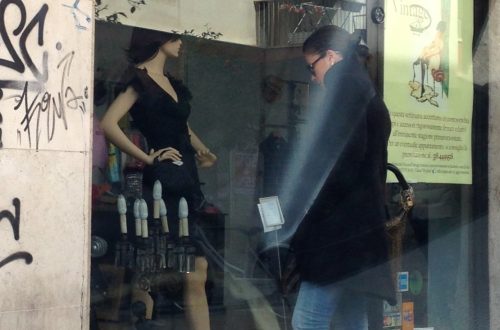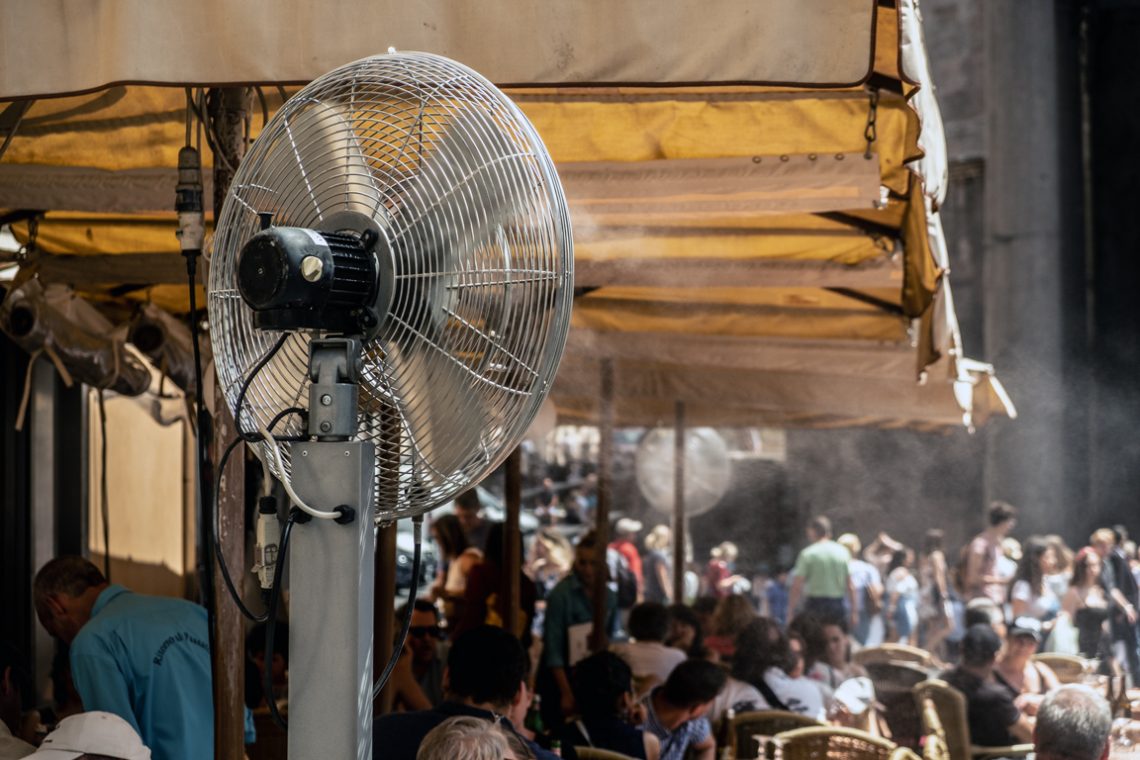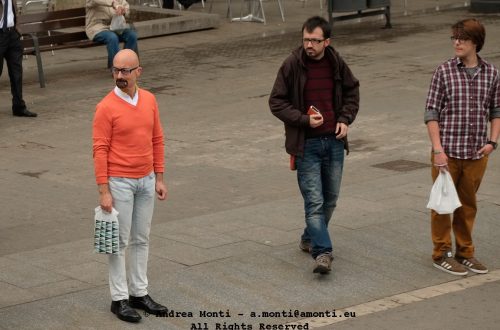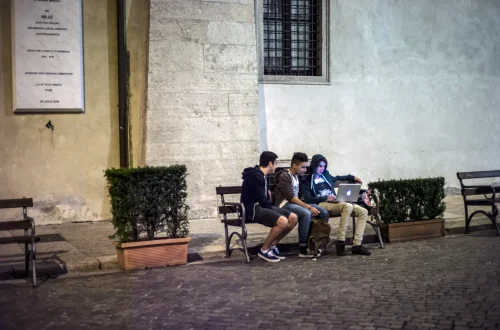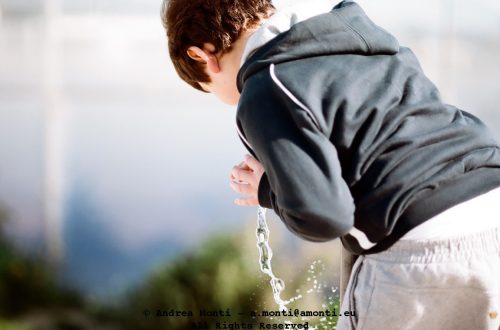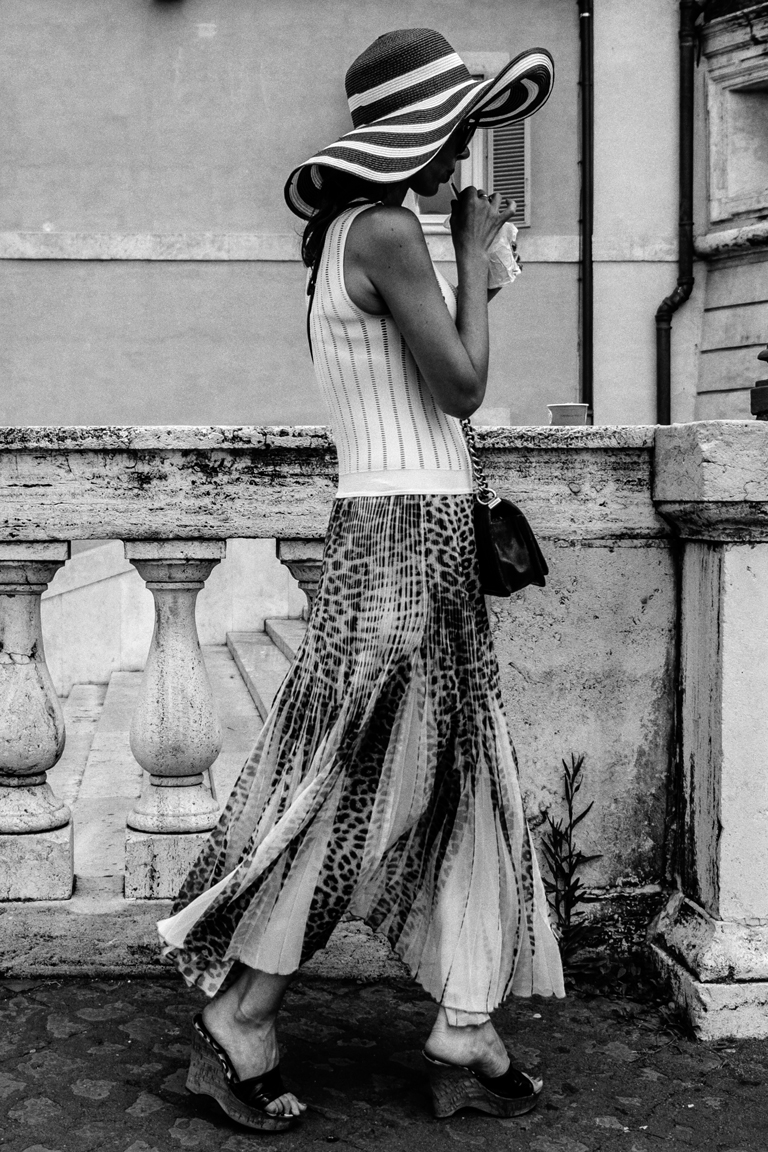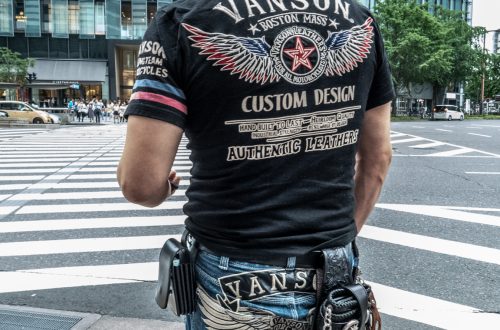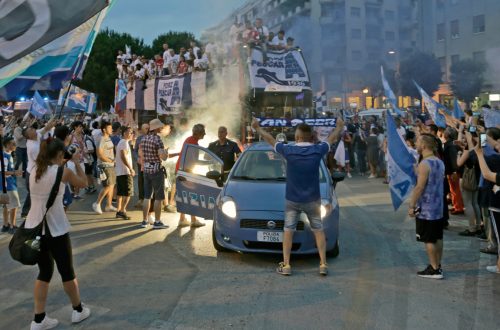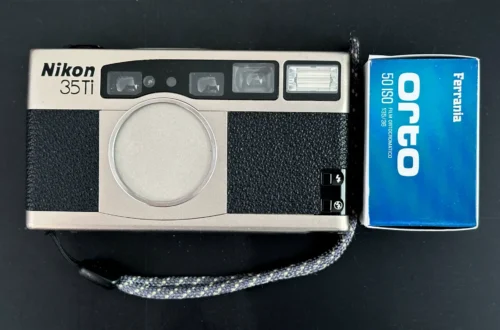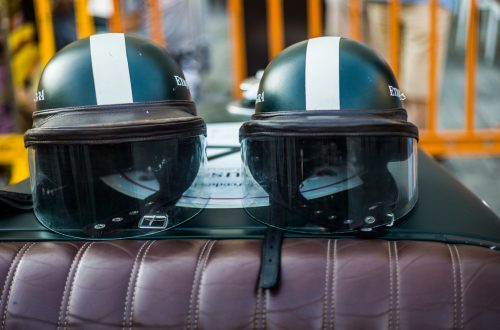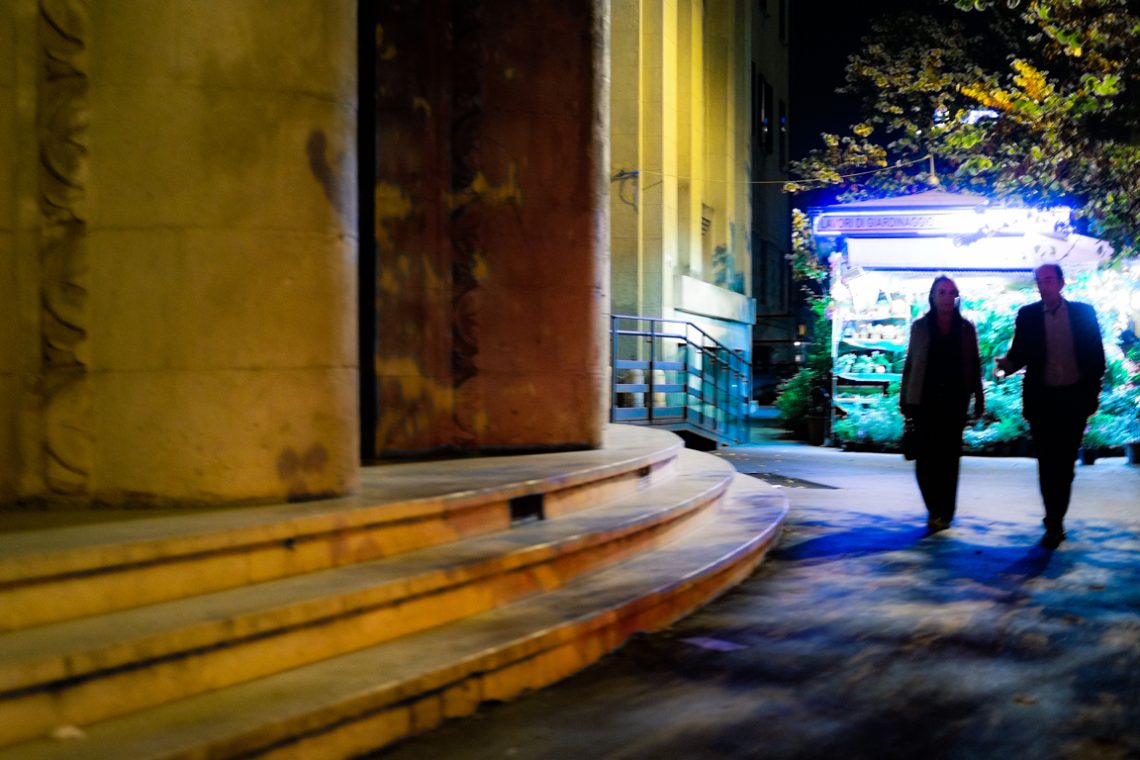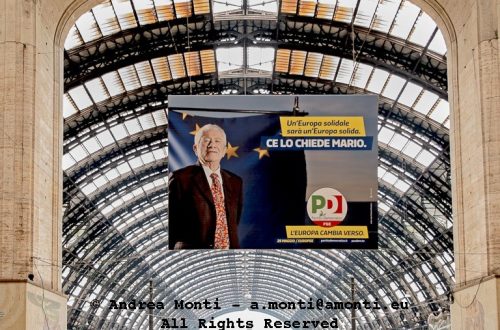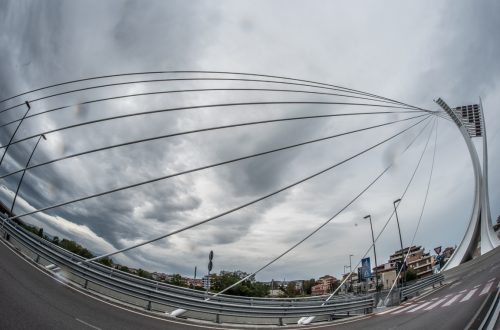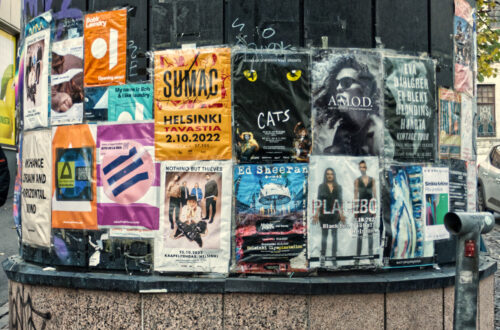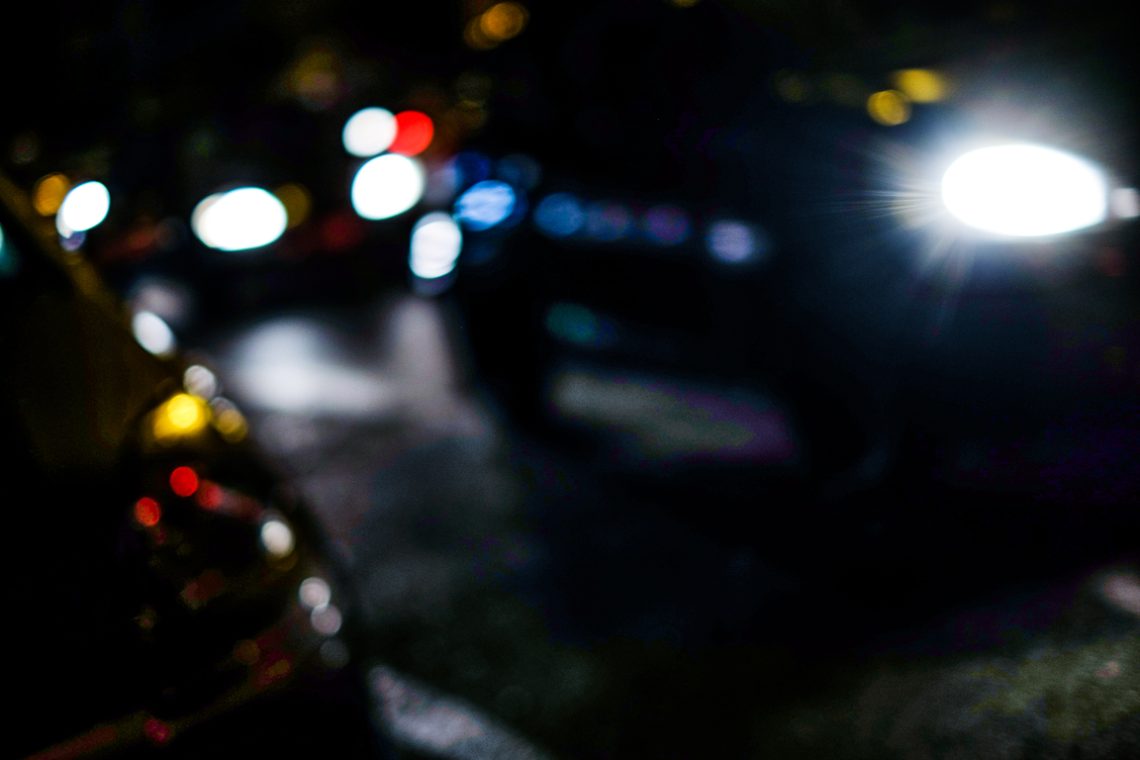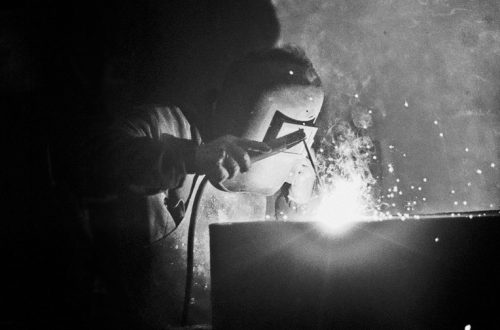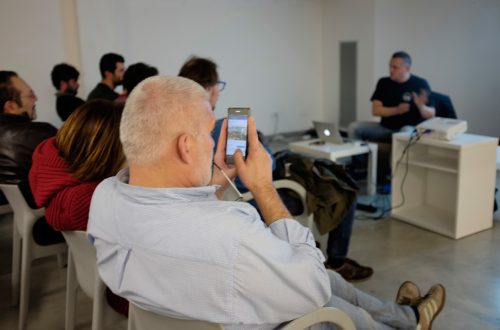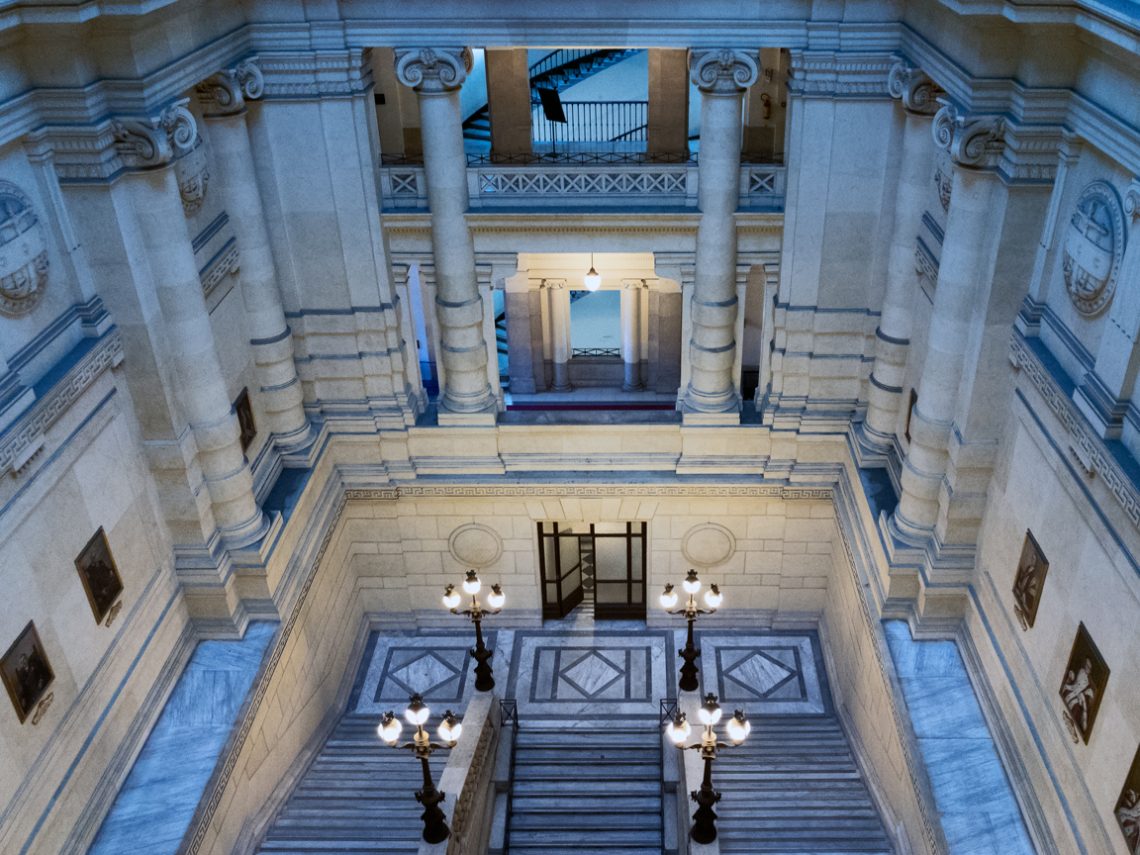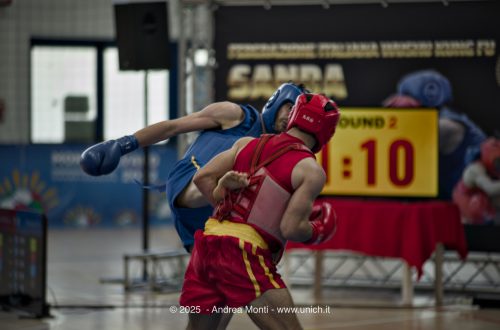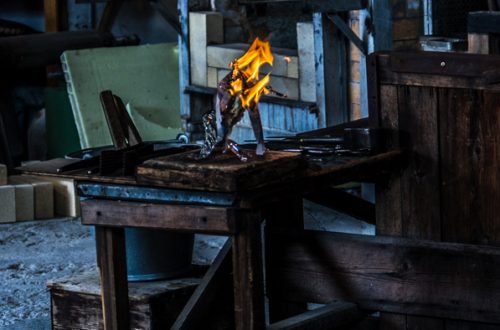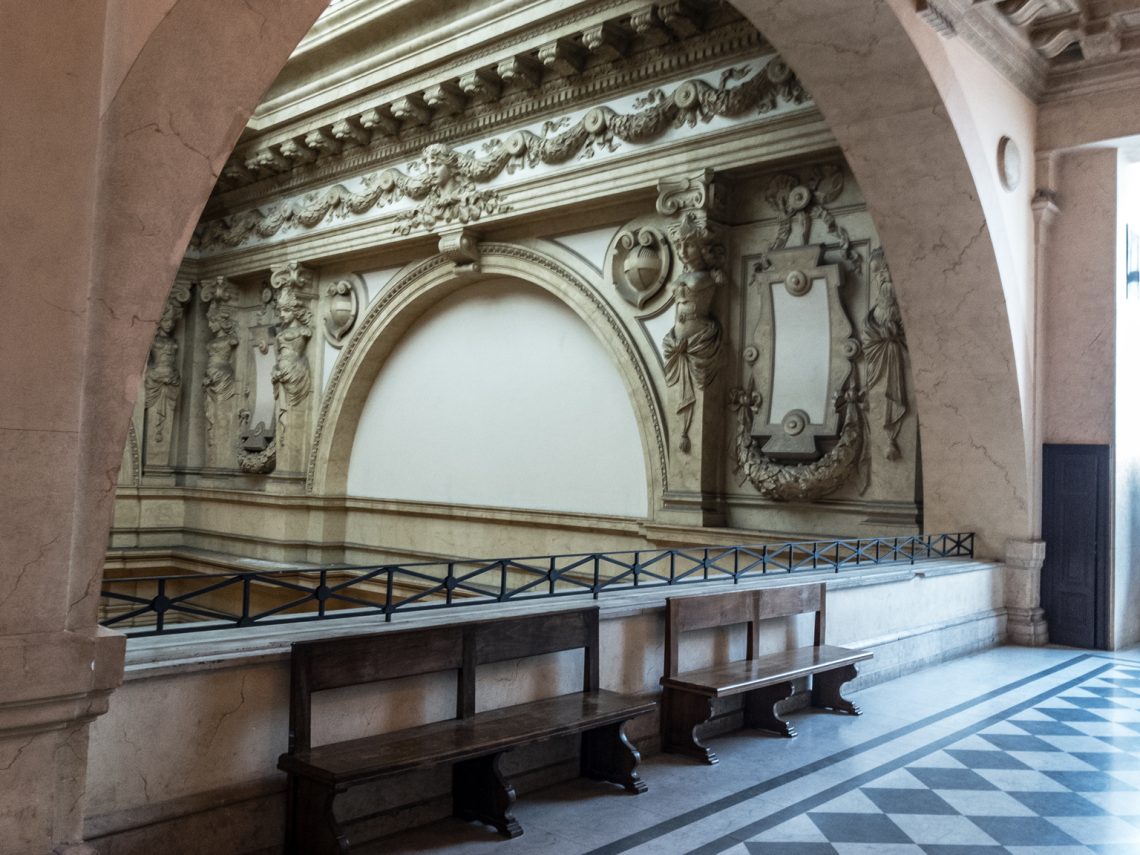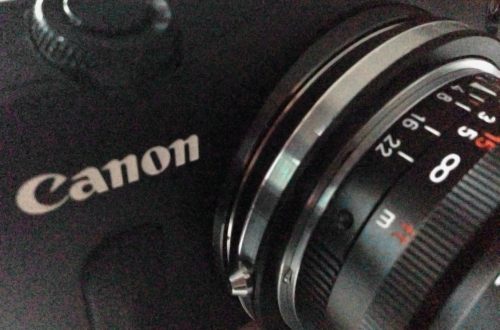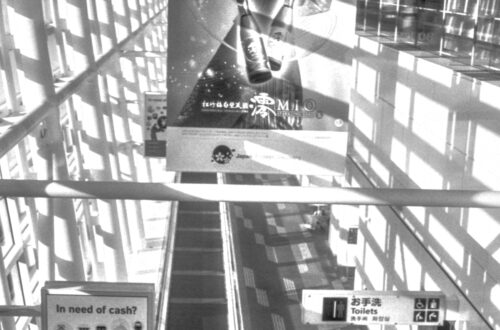-
Technological Memento
-
Deadly Bored
Once again, the meaning of this picture is counter intuitive and “made up” by the composition. The scene is seen from the perspective of the mannequin: at the end of a hard day spent sitting on the street-front, it (or he?) looks deadly bored and tries to kill the time before the shop closes by casually looking at the next passerby. The directional effect (from the mannequin to the passerby) is achieved by the diagonal connecting the tip of the hat, the feet of the mannequin and the cast of the shadow. Taken as a whole, these elements drive the eye from the mannequin to the persons and not vice-versa.
-
A Virtual Glance Dance
The essence of this photo is all in the glances of the protagonists. The man looks at the woman, the woman looks at the luxury car. The essence of this photo is all in the glances of the protagonists. The man looks at the woman, and the woman looks at the luxury car. It is this subtle game of glances that tells a story and turns the photography from a casual picture into something worth seeing. Once again, it is not relevant whether the people portrayed are actually involved in the “glance dance”, as what matters is the image to convey the meaning created by the overall result. This confirms…
-
When Tilted Photos Work
Tilted photos are very challenging to take. It is easy to break the composition, lose an essential part of the scene, or take a bad picture. Furthermore, making sense out of a diagonal orientation with a ratio that is not square (Hasselblad people, I can hear you loud and clear!) adds layers of difficulties. As counterintuitive as it might look, this photo taken in a “normal” orientation would have lost all its visual impact.
-
Good Plan, Poor Execution
The idea behind the composition is entirely correct. The mannequins and the girl form a triangle, as does the direction of the stares, conveying both a sense of symmetry and counterposing the liveness of a human being to the puppets’ lack of. A poor execution, though, led to the mannequins’ head cut, turning a visually appealing photography into a meaningless shot.
-
Light as Meaning Shifter
The original idea behind this picture was to match the emptiness of the shop with the facelessness of the mannequin posing as a store clerk, to convey a general feeling of depersonalization. Unfortunately, the big lightblot represented by the poster close to the mannequin catches the observer’s attention and reduce the effectiveness of the composition. Instead of connecting the mannequin with the internal part of the store thus making sense of the whole picture, the eye just “sees” an ad poster.
-
Photopanning in Rome
Photo panning is an art in itself and – when adequately practised – is able to deliver a stunning visual experience. In this picture (that has not been altered but for contrast and clarity) the overall experience reminds the Impressionism aesthetics.
-
Keep Out!
This photo conveys a message of “rejection”: first, a security guard who blocks access to the jewellery and then a signal of a prohibition of access reinforces the concept, thanks to a composition that guides the eye to a diagonal that goes from the bottom to the top, from left to right. Obviously, there is nothing “true” about all this because the overall result is the result of the organization of the spaces and the management of the perspective that allow connecting semantically elements that, in reality, have no relationship between them. It would have been enough to shoot from a different angle – or not juxtapose the security guard…
-
Beer or Spritz?
-
Fast Drivers in Via del Tritone
Via del Tritone at night has a way of compressing time. Standing at the curb, I could feel the pulse of the city—headlights cutting through the darkness, scooters weaving between lanes, the chatter of pedestrians briefly audible before being swallowed by the traffic. I set out to capture that restless energy, the kind that makes you feel Rome isn’t an ancient city at all, but something entirely modern, alive and impatient. The shot hinges on motion blur. A slower shutter allowed the black car in the foreground to smear into streaks of light and shadow, while the scooters retained just enough form to remain identifiable. This contrast between sharp architectural…
-
A Priest Walking Through the Graffiti Streets
I took this photograph on a narrow cobbled street, where the encounter was fleeting. The priest moved with determination, his robes flowing around him, his beard caught in mid-sway. The background of tagged walls and worn stone contrasted sharply with his presence, layering a sense of tension between the sacred and the profane, tradition and modern neglect. Compositionally, the image relies on that juxtaposition. I framed him walking into the picture, leaving space in front to suggest motion. The graffiti and rough textures anchor the scene in the urban present, while his attire evokes a continuity that feels almost timeless. That clash is where the strength of the image lies:…
-
Comarketing
Two adjacent shop windows that seem, unintentionally, to speak to each other. On the left, rare books and old prints rest under soft light, their pages worn and yellowed. On the right, a brightly lit glass case displays modern eyewear, polished and reflective, marketed with sleek precision. A drainpipe slices the frame in two, acting as a border between past and present, knowledge and fashion, permanence and trend. Technically, the image holds together through contrast. The exposure balances the dim warmth of the books with the cooler, artificial light of the glasses’ display. Reflections in the glass add layers, hinting at street life beyond the frame. The sharpness allows textures…
-
What’s the Time?
-
Garbage As Usual – Pantheon’s Nearby
Rome has an unrivalled way of holding beauty and decay in the same frame, and this street is no exception. The cobblestones, slick from a recent rain, mirror the ochre façades and Renaissance windows in a way that almost disguises the litter piled quietly along the curb. Almost. A man in a crisp shirt walks down the centre, back straight, seemingly immune to the refuse that flanks his path. It’s not that he doesn’t see it—it’s that he’s learned to live with it, as many Romans have. On the right, another figure leans against a doorway, absorbed in his phone, framed by stacked crates and plastic bags. Life continues unbothered.…
-
School of Mathematics@Sapienza University of Rome
I composed this shot knowing it would live or die by its symmetry. The rationality of the architecture demanded nothing less. Sapienza’s School of Mathematics sits like a theorem etched in stone—precise, functional, stripped of excess. Guido Castelnuovo’s name anchors the frame, a reminder that mathematics is not only numbers, but legacy. The format is tight, frontal, and unforgiving. Every vertical and horizontal line had to be clean. A small tilt would’ve betrayed the sense of order. I waited for the man to step into the doorway—not to animate the structure, but to punctuate it. His relaxed stance, paper in hand, slightly breaks the formalism of the façade. A human…
-
An Athlete@Stadio Marmi, Rome
-
Weight Training @ Rome’s Stadio Olimpico
I shot this in harsh midday light, the kind most photographers dread. But the mosaic didn’t care. Its story is laid in stone — or more precisely, tesserae — and midday is when shadows become honest. The ancient-modern figure caught mid-lift, exaggerated anatomy and all, stood out like a silhouette against cracked mortar, telling a tale of strength far older than gym culture. The composition was dictated by the subject’s posture — hunched, determined — anchoring the frame and leading the eye to the barbell below. I shot from slightly above, keeping the symmetry broken just enough to feel real. The top of the frame includes fragments of the inscription…
-
Moistmaker@Piazza della Rotonda
I took this photograph at a crowded café terrace in the height of summer, when heat presses down on both locals and tourists. The focus is not on the crowd itself but on the industrial fan in the foreground, misting the air with a fine spray. Its utilitarian presence dominates the frame, turning into an unlikely protagonist against the backdrop of awnings, chatter, and bodies seeking shade. Compositionally, I placed the fan off-centre but close enough that its metallic grid commands attention. The yellow canopies lead the eye deeper into the scene, pulling focus towards the throng of people blurred in the background. That separation between sharp foreground and hazy…
-
Under the Heat Of Rome…
She walks past the stone balustrade, her wide-brimmed hat casting a deep shadow across her face. The pleated skirt moves with the air, its animal print contrasting with the weathered marble at her side. In her hand, a napkin-wrapped snack suggests both haste and respite, a small act of survival beneath the relentless Roman sun. The choice of black and white eliminates distraction and fixes the viewer’s attention on form, texture, and gesture. The skirt’s flowing transparency, the sharp lines of the ribbed top, and the curved stripes of the hat create a rhythm that plays against the rigid geometry of the architecture. Compositionally, the subject is caught mid-step, a…
-
The Flame is Still Burning…
I framed this image at the Altare della Patria in Rome, positioning myself low enough that the eternal flame rose against the statues behind it. I wanted the flame to feel alive, not simply ornamental, so I allowed it to breathe in the frame — neither perfectly centred nor clipped — letting the movement of the fire contrast with the stony immobility of the figures. Technically, it’s a shot about balance. The ornate bronze of the burner holds deep shadows and highlights, and getting both to read required a careful exposure, leaning slightly toward underexposing to preserve the flame’s detail. The sky was playing along that day, with just enough…
-
An Essay on Light
-
An Essay in Composition
I made this image out of defiance. The street was a mess of cars, headlights flaring, bodies moving — and instead of chasing sharpness or narrative, I stripped it down to pure visual rhythm. Defocused on purpose. Not by mistake, not due to speed, but as a choice to let form take over function. What remains is balance. The white beam on the right anchors the frame, violent in intensity, flaring just enough to fracture the blacks. On the left, the warmer tones — yellows, reds, soft reflections in polished metal — counterbalance with weight and curve. The centre dissolves into suggestion. Light, motion, nothing literal. The street disappears. Technically,…
-
The Temple of Justice
From an elevated perspective, the grand staircase of the Italian Court of Cassation descends in perfect symmetry. Framed by neoclassical columns and lit by reverent lamplight, this space does not merely lead—it ascends, conceptually, toward the divine. The title, The Temple of Justice, is not metaphorical hyperbole, but a statement of function and form. This is not a courthouse. It is a sanctuary. Justice, as the image suggests, is not a secular procedure. It is a liturgy. It unfolds with rituals, vestments, invocation of higher powers, and the solemnity of faith. The robes, the benches, the altars of the law—these mimic the language of churches. And the Court of Cassation, the…
-
Waiting for (Supreme) Justice
I took this while waiting, quietly, in Rome’s Corte di Cassazione—a place where silence isn’t just expected, it’s structural. Every arch, bench, and cornice feels designed to mute the outside world. What struck me wasn’t the grandeur (although the sculptural work is unapologetically ornate), but the emptiness. For all the architectural posturing, justice here is often a matter of waiting. The benches, scuffed and rigid, are the only human-scale elements in the frame. They sit below a frieze of muscular allegories and baroque pomp, a reminder of the institutional weight bearing down on the people beneath. The image is composed to reflect this—foreground arch framing the frieze, a horizontal band…
